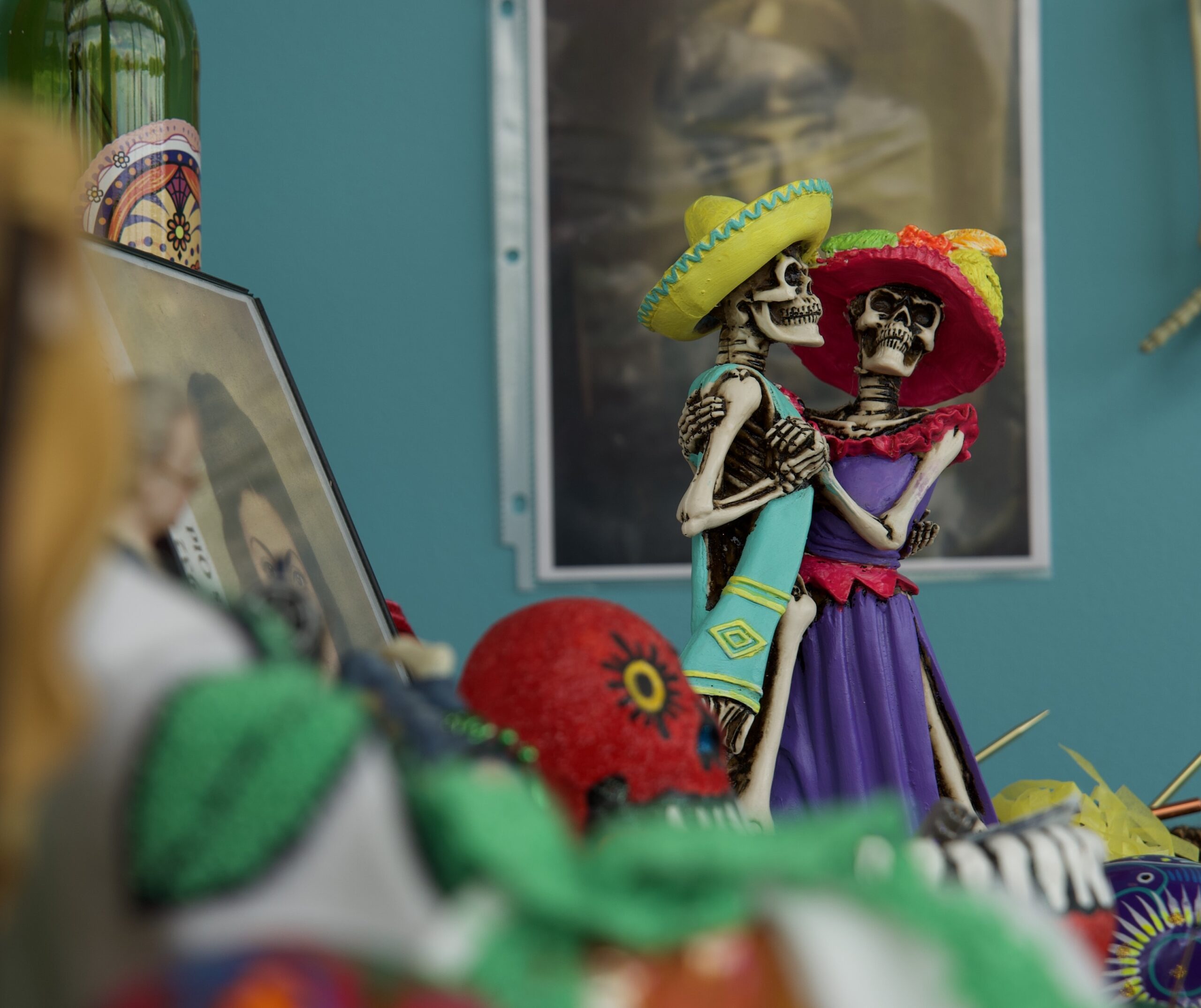
When Marta Moreno speaks about death, she’s very matter of fact. It’s hard not to be, when she’s been experiencing loss her entire life: her parents, aunts and uncles and 10 of her 13 siblings, all dead. But it's also because each fall, she brings her loved ones back to life.
“They're there, their body's gone, but their spirit’s there,” she says. “They will always be there with you. You can always speak to them and know that they’ll take care of you.”
Moreno has been building an ofrenda, or altar, for Dia de Muertos since she was a kid in El Paso, Texas. When her husband was offered a job in Boulder, she moved her family to Colorado in 1973, eventually settling in Longmont and bringing the traditions of the Mexican holiday with them.
When Moreno first moved here, she didn’t know anyone in Boulder who was building an ofrenda, let alone celebrating Dia de Muertos, but her family still built an altar in their home each year to welcome the souls of their loved ones as the dead are reunited with the living.
That all changed in 2000, when the Longmont Museum teamed up with Moreno and other community members to host a modest, one-weekend event in their gallery featuring ofrendas, traditional Mexican food, dance, music and art. Twenty-four years later, Moreno’s altar is an enduring feature in the longest running citywide Day of the Dead celebration in Colorado.
“We helped to get this thing going,” Moreno says, “and it came from something small there, to something big.”
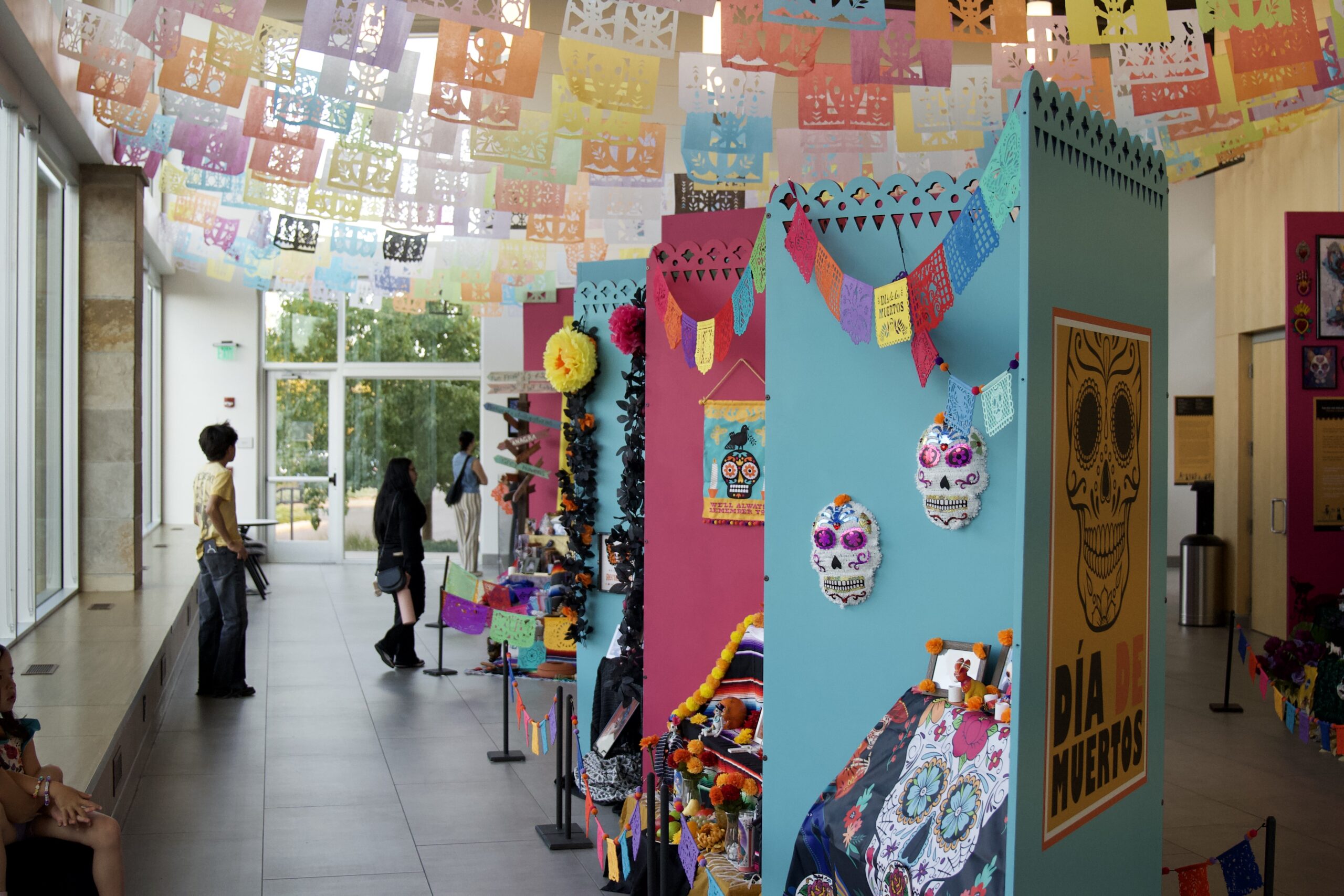
‘Stuff that brings back our family’
Moreno calls her ofrenda “traditional” in a sense that she builds it for her family members who have died, so that when their souls return to reunite with the living, they have everything they need to rest after their long journey.
The vibrant, stepped altar is decorated with photos of her loved ones, like her brother David, who earned the nickname “Al Pacino Valenzuela” because of his ever-present fedora. Between the photos, she places heirloom olla de barros (clay pots) for cooking, a hand-stitched dress her mother made, traditional Catholic iconography and statues — even her mother’s old back-scratcher.
“It’s stuff that I have, stuff that brings back our family,” she says. “What you grew up with… what we used to use.”
Moreno hopes that her altar will inspire others to build a tradition of their own. “Hopefully they get encouraged and bring that back,” she says. “Or even if they didn't have it, to start it, so they can show their children… their mother, grandma — what were they about? That's the idea.”
Building community
For Anna Macca, the museum’s curator of education, the exhibit provides an opportunity for visitors to not only learn about the holiday and Hispanic culture, but also to find their own way to celebrate.
“Mexican culture is not a monolith,” Macca says. “How people celebrate Day of the Day is very different from region to region. In some places it can be more somber, and in some places it can be more celebratory.”
By educating people on the nuances and understanding the breadth of cultural experiences, it makes the act of building an altar more approachable, Macca says.
“It lets people know there's not going to be one way to do this,” she says. “So you can't expect things to always be the same or even to be like, in quotations, authentic.”
This message unfurls itself on the gallery floor. In all, there are 11 altars in the exhibit. Like Moreno’s, some ofrendas are more traditional, dedicated to lost loved ones. The “fur baby” altar features hundreds of photos of pets donning angel wings, arranged on a tissue paper rainbow bridge. Across the room, an altar decked out with novelties from Doctor Who, Star Wars and other sci-fi and fantasy classics is dedicated to Kelly Cowling, the founder of Longmont’s youth-focused nonprofit Grey Havens.
Spanning the entire length of the gallery’s back wall is a mural created by Chicano artist and activist Leo Tanguma and a group of Longmont teens in the 1990s. When the mural was given to the museum, staff contacted the original artists. Three have passed since its making, and the museum asked the group to build an altar around the mural for this year’s exhibit.

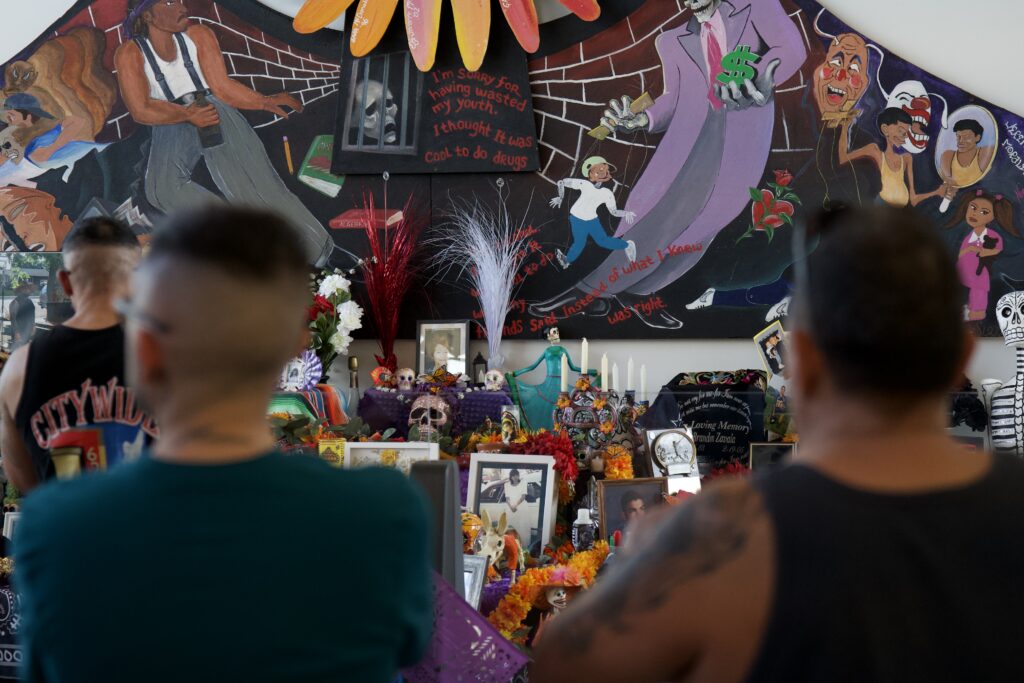
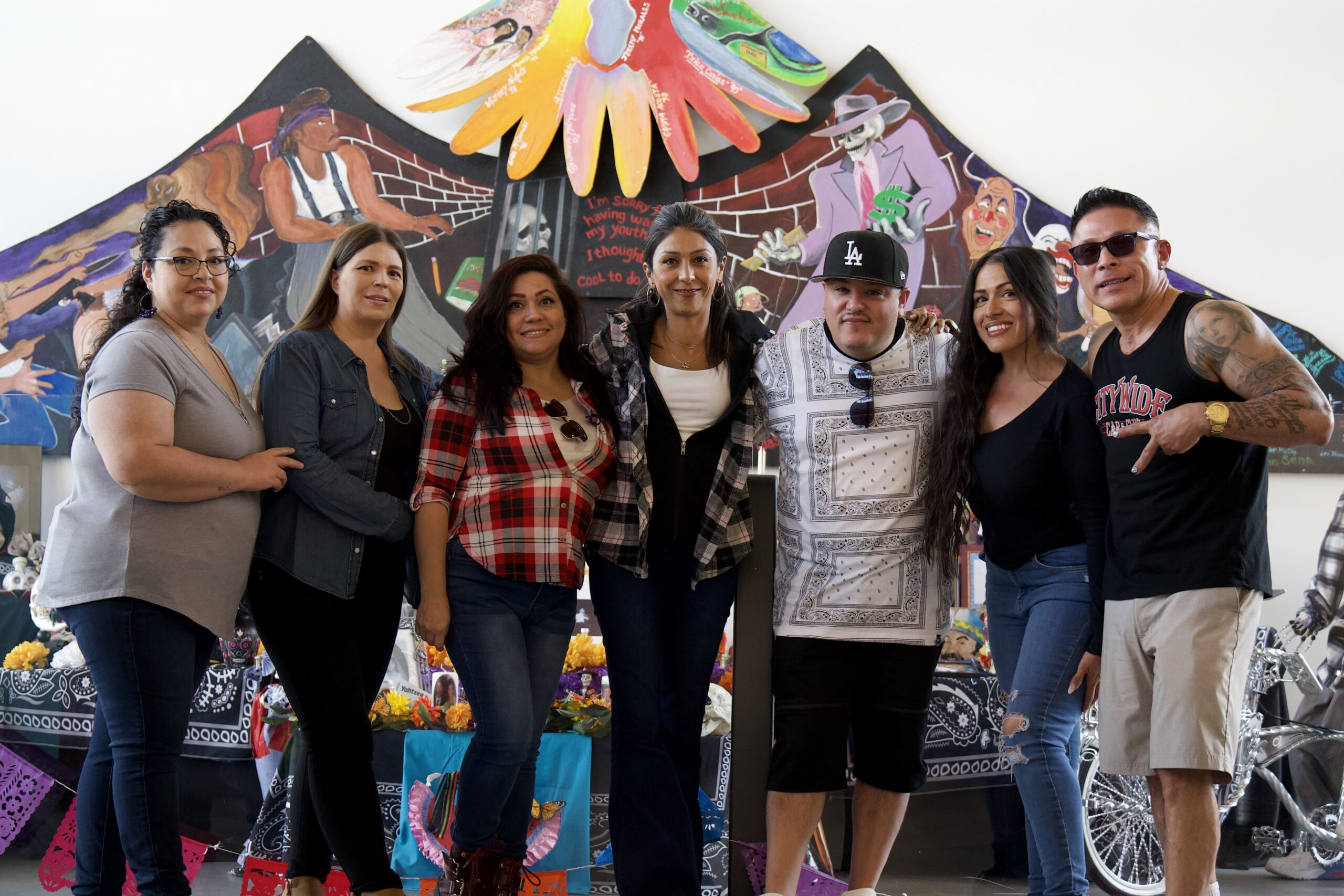
“[T]here's quite a bit of people, new people, that have come to do it because they see and they get encouraged,” Moreno says.
“We do feel really strongly about education and about making sure that people understand, like the history and the symbolism and where those things come from,” Macca says. “My highest hope is that people see the exhibit, read the labels that say what Day of the Dead is and what the symbolism is… and then build their own altar at home.”
Resurrecting tradition
For some of the exhibit’s visitors, the ofrendas are the spark that resurrects a lost tradition.
Laura Zavala was raised in Longmont. She only knew Dia de Muertos through the words of her Mexican-born mother.
“I grew up listening to these stories and listening to what it was like but I had never experienced it,” she says. “I only envisioned what it was like.”
Fifteen years ago, she heard about the exhibit and decided to go. “From that moment, it was just like having an epiphany, because it was like literally hearing my mom's stories.”
Zavala ended up volunteering as an educator for Longmont’s Dia de Muertos event and has had an altar in her house ever since.As the exhibit has evolved into a citywide event, she’s also seen local businesses start to participate.
Bakeries across the city now sell pan de muerto — bread of the dead — each fall, and marigolds, a bright yellow-orange flower thought to attract the souls of the dead to altars, pop up in garden centers each October.
This year, Zavala was able to plant marigolds at the grave of her father, who passed away in August 2023. “It gets me emotional, because I love that what my mom got to do with her loved ones, I get to do with my dad,” she says.
In some regions of Mexico, celebrations in graveyards are a central part of Dia de Muertos, according to Macca. This tradition, too, has grown roots in a small corner of the Longmont cemetery where Zavala’s father is buried.
Last year, families brought lawn chairs, blankets and fresh tamales. By day’s end, full trash cans bore evidence of the food they shared during the hours-long vigil.
“It was just so beautiful, because our little section was literally like a Day of the Dead celebration,” Zavala says. “I drive by that cemetery all the time, and I had never seen that kind of participation.”
Zavala plans to carry on this new tradition, and hopes that she can share it with her own family. “For me, because I didn’t have that strong connection with the traditions and the celebrations and the food and the way we do things as Latinos, that was very important for me to carry that on with my son, because I want his family someday to continue these traditions.”
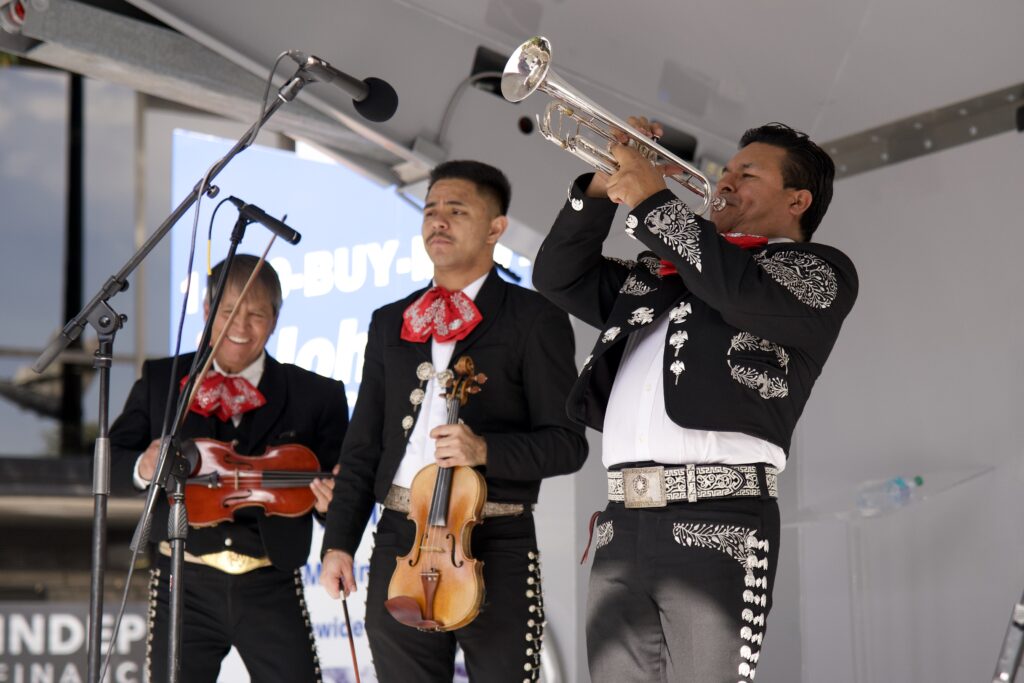
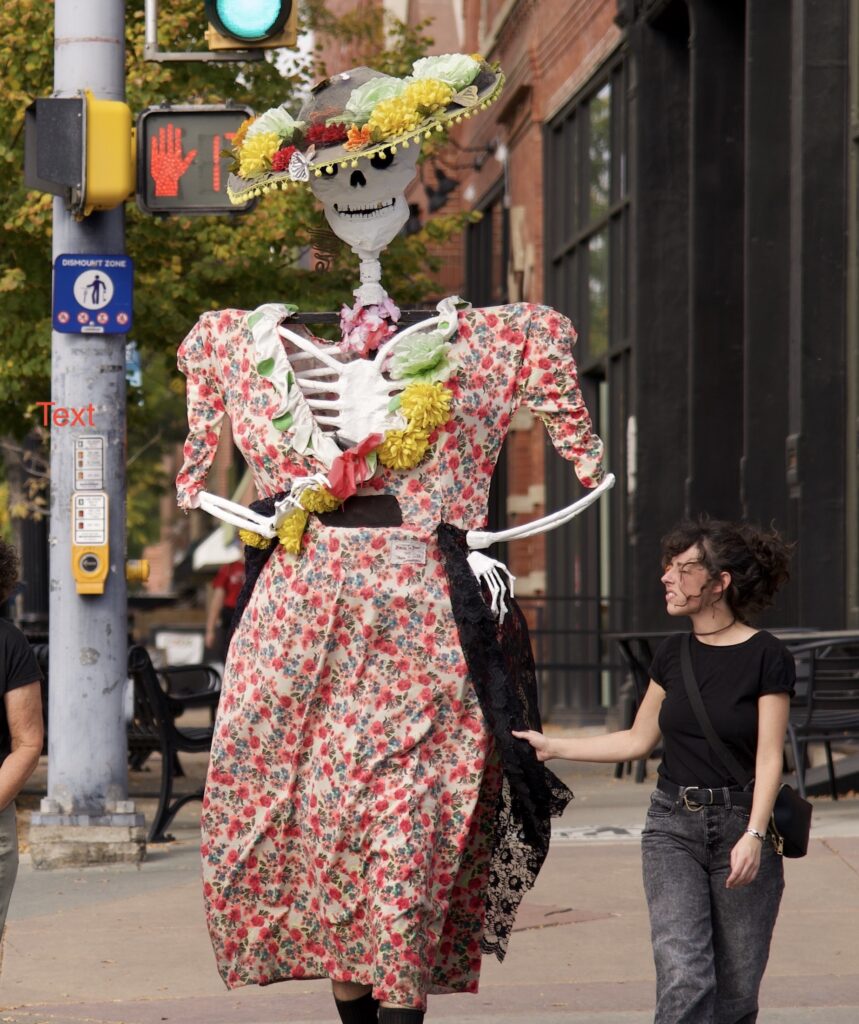
'Death is hard'
As the city’s celebration has outgrown the museum, flooding downtown each October, it’s become an experience that connects the community.
“I love that it brings people together, because we can all share it,” Zavala says. “It doesn’t matter what your religion is, everyone can celebrate this and honor their loved ones.”
“Death is hard. We lose people and pets and things we love, and it feels like they’re gone forever,” Macca says. “But the fact is, it’s part of your life.”
Longmont’s Day of the Dead event came and went Oct. 12, but Moreno hopes the exhibit, which is open through Nov. 5, will continue to inspire its visitors.
“Come to the museum and see, check out the altars,” she says. “See if you get encouraged because you've had several members of the family pass. Bring them alive.”
